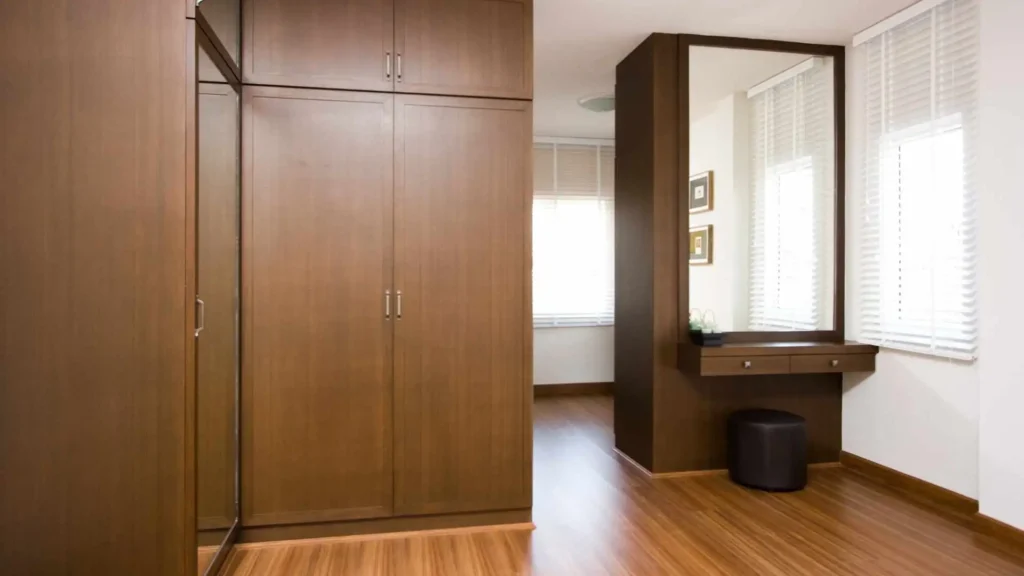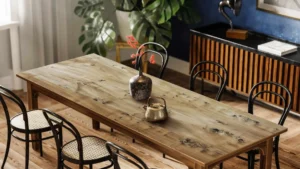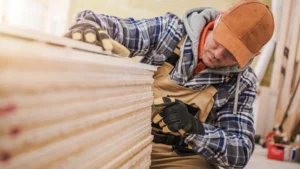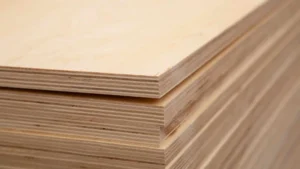Restoring your old furniture is a rewarding way to preserve memories, reduce waste and breathe new life into tired pieces. One of the most effective methods for furniture restoration using Wood Veneer. Veneer can add a fresh and polished look to burnout furniture and also reinforce durability making them practical choices for you if you’re a DIY enthusiast or a professional. In this guide you can learn everything about the steps of restoring old furniture with Wood Veneer.
What do you need to know about Wood Veneer?
Wood Veneer is actually a thin layer of wood sliced from logs and bonded to substrate like plywood and MDF. It is basically used to improve the aesthetics of furniture offering high end wood finish without the cost of solid wood. Veneer replicates the appearance of solid wood at a fraction of cost so if you are looking for a budget friendly option then it’s your best bet. Properly applied Veneer extends the life of furniture by adding an extra layer. It is available in a variety of textures, patterns and wood species. Veneer maximizes wood utilization making it an eco friendly choice for you.
Step by step guide to restoring furniture with Wood Veneer
- You can start by evaluating the furniture piece for damage like cracks and loose joints. You can just address the structural issues first to ensure a stable base for the winning application. It’s very important for you to use a mild detergent to remove dirt, grease or grime.
- If the furniture already has damaged Veneer remove it carefully to avoid harming the substrate. Just apply heat with an iron or heat gun to loosen the old glue. You can also use a scraper to gently remove the Veneer. Next you need to smooth out the surface to remove the leftover adhesive residue.
- Accurate measurements can ensure that the Veneer fits perfectly. You can use a measuring tape to measure the dimensions of the surface. You can mark and cut the Veneer. It is very important for you to choose the right adhesive based on the project requirements. Wood glue is ideal for large surfaces offering a strong bond. It is suitable for quick applications and curved surfaces. It’s very important for you to apply the adhesive evenly on both the Veneer and the furniture surface. Allow it to be set according to the manufacturer’s instructions before proceeding.
- Furthermore you can even carefully position the Veneer on the furniture surface. Start at one corner and gradually press the Veneer down, smoothing out air bubbles as you go. You can use clamps or place weights over the Veneer to ensure proper adhesion. Just allow the Veneer to cure for the recommended time.
- Once the Veneer is secured, trim the edges using a utility knife or Veneer saw for a proper finish. You can sand the edges lightly to blend them seamlessly with the furniture.
- It’s very important for you to inspect the Veneer surface for gaps or imperfections. Just fill in the gaps around the edges or joints using Veneer filler. You can sand the filled areas for a smooth uniform surface. It is very important for you to choose a finish that complements the Veneer and improves its durability.
Veneer techniques for different furniture types
Flat surfaces are the easiest to Veneer. You need to focus on achieving a smooth finish by clamping down the Veneer evenly. For curved surfaces you can use flexible Wood Veneer and contact cement for better adhesion. You can just work in small sections to avoid wrinkles or bubbles. Edge banding Veneer is perfect for finishing the edge of shelves and drawers.
Tips for a professional finishing
Dust can interfere with edition and the final finish so you ensure that your workspace is clean. A roller can help you press the Veneer down evenly and eliminate air bubbles. Just allow adhesives and finishes to dry fully to achieve the best results. High quality Veneer lasts longer and provides a more polished appearance. Before applying varnish or paint, test it on a small unconscious area to enjoy it and complement the Veneer.
So above all you need to know that restoring old furniture with Wood Veneer is a perfect way to preserve cherished items, improve their appearance and practice sustainability. With the right tools and techniques you can transform your outdated piece into a stunning focal point for your home. At Duroply You can completely come across a huge range of high quality Veneer design to make your furniture restoration projects seamless and beautiful. You can visit the website and explore the premium Veneer options and discover how the experts can help you create lasting impressions with your furniture.







